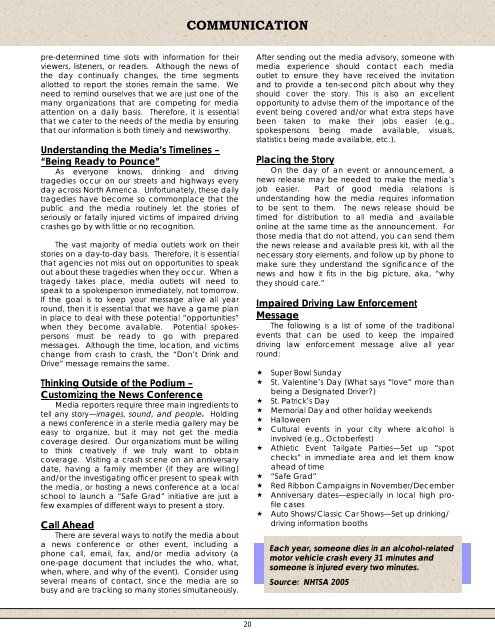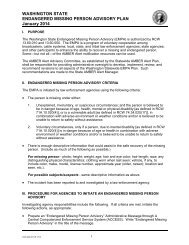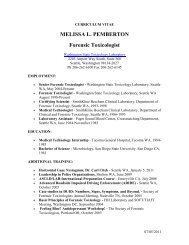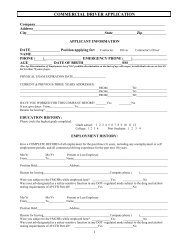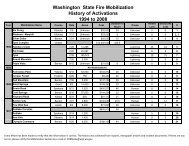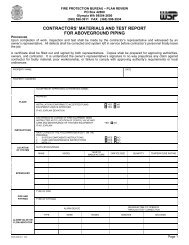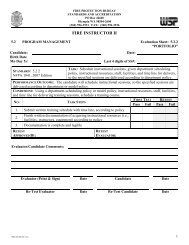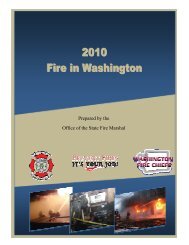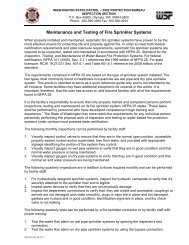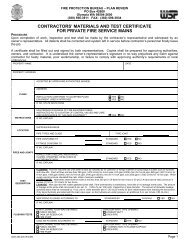Impaired Driving Subcommittee Impaired Driving Guidebook - NHTSA
Impaired Driving Subcommittee Impaired Driving Guidebook - NHTSA
Impaired Driving Subcommittee Impaired Driving Guidebook - NHTSA
Create successful ePaper yourself
Turn your PDF publications into a flip-book with our unique Google optimized e-Paper software.
COMMUNICATIONpre-determined time slots with information for theirviewers, listeners, or readers. Although the news ofthe day continually changes, the time segmentsallotted to report the stories remain the same. Weneed to remind ourselves that we are just one of themany organizations that are competing for mediaattention on a daily basis. Therefore, it is essentialthat we cater to the needs of the media by ensuringthat our information is both timely and newsworthy.Understanding the Media’s Timelines –“Being Ready to Pounce”As everyone knows, drinking and drivingtragedies occur on our streets and highways everyday across North America. Unfortunately, these dailytragedies have become so commonplace that thepublic and the media routinely let the stories ofseriously or fatally injured victims of impaired drivingcrashes go by with little or no recognition.The vast majority of media outlets work on theirstories on a day-to-day basis. Therefore, it is essentialthat agencies not miss out on opportunities to speakout about these tragedies when they occur. When atragedy takes place, media outlets will need tospeak to a spokesperson immediately, not tomorrow.If the goal is to keep your message alive all yearround, then it is essential that we have a game planin place to deal with these potential “opportunities”when they become available. Potential spokespersonsmust be ready to go with preparedmessages. Although the time, location, and victimschange from crash to crash, the “Don’t Drink andDrive” message remains the same.Thinking Outside of the Podium –Customizing the News ConferenceMedia reporters require three main ingredients totell any story—images, sound, and people. Holdinga news conference in a sterile media gallery may beeasy to organize, but it may not get the mediacoverage desired. Our organizations must be willingto think creatively if we truly want to obtaincoverage. Visiting a crash scene on an anniversarydate, having a family member (if they are willing)and/or the investigating officer present to speak withthe media, or hosting a news conference at a localschool to launch a “Safe Grad” initiative are just afew examples of different ways to present a story.Call AheadThere are several ways to notify the media abouta news conference or other event, including aphone call, email, fax, and/or media advisory (aone-page document that includes the who, what,when, where, and why of the event). Consider usingseveral means of contact, since the media are sobusy and are tracking so many stories simultaneously.After sending out the media advisory, someone withmedia experience should contact each mediaoutlet to ensure they have received the invitationand to provide a ten-second pitch about why theyshould cover the story. This is also an excellentopportunity to advise them of the importance of theevent being covered and/or what extra steps havebeen taken to make their jobs easier (e.g.,spokespersons being made available, visuals,statistics being made available, etc.).Placing the StoryOn the day of an event or announcement, anews release may be needed to make the media’sjob easier. Part of good media relations isunderstanding how the media requires informationto be sent to them. The news release should betimed for distribution to all media and availableonline at the same time as the announcement. Forthose media that do not attend, you can send themthe news release and available press kit, with all thenecessary story elements, and follow up by phone tomake sure they understand the significance of thenews and how it fits in the big picture, aka, “whythey should care.”<strong>Impaired</strong> <strong>Driving</strong> Law EnforcementMessageThe following is a list of some of the traditionalevents that can be used to keep the impaireddriving law enforcement message alive all yearround: Super Bowl Sunday St. Valentine’s Day (What says “love” more thanbeing a Designated Driver?) St. Patrick’s Day Memorial Day and other holiday weekends Halloween Cultural events in your city where alcohol isinvolved (e.g., Octoberfest) Athletic Event Tailgate Parties—Set up “spotchecks” in immediate area and let them knowahead of time “Safe Grad” Red Ribbon Campaigns in November/December Anniversary dates—especially in local high profilecases Auto Shows/Classic Car Shows—Set up drinking/driving information boothsEach year, someone dies in an alcohol-relatedmotor vehicle crash every 31 minutes andsomeone is injured every two minutes.Source: <strong>NHTSA</strong> 200520


